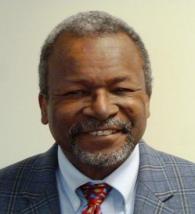Gap Between Those Needing, Getting Treatment to Grow

Wesley Clark, MD
Addiction Advocacy Articles and News
Addiction Law, History and Public Policy Articles
Advocacy Articles and News
Mental Health Parity
Overview
Originally Published: 04/28/2013
Post Date: 04/28/2013
Source Publication: Click here
by ASAM
Summary/Abstract
Saturday's Public Plenary Session, "U.S. Drug Crisis—The Addiction Treatment Gap," featured H. Westley Clark, MD, JD, MPH, CAS, FASAM, Director of the Substance Abuse and Mental Health Services Administration (SAMHSA) Center for Substance Abuse Treatment discussing how this scenario could affect addiction medicine.
Content
Gap Between Those Needing, Getting Treatment to Grow
 |
| The beautiful Grand Ballroom of the Hilton Chicago drew a standing-room-only crowd to Saturday's Public Policy Plenary Session. |
Addiction medicine is a field growing quickly to improve the treatment of people with drug and alcohol use disorders. Still, a gap exists between those needing treatment and those receiving it, and the gap is expected to widen when millions more people gain access to medical coverage through the Affordable Care Act (ACA).
Saturday's Public Plenary Session, "U.S. Drug Crisis—The Addiction Treatment Gap," featured H. Westley Clark, MD, JD, MPH, CAS, FASAM, Director of the Substance Abuse and Mental Health Services Administration (SAMHSA) Center for Substance Abuse Treatment discussing how this scenario could affect addiction medicine.
The session also featured members of the ASAM Public Policy Committee discussing how the committee operates and influences ASAM's positions on issues such as government regulations that affect the treatment of substance use disorders. They emphasized that ASAM members can play a key role in influencing the society's policies by getting more involved in public policy at the local level.
But it was Dr. Clark who put into perspective the latest challenges in addiction medicine and how ASAM and its members can play a role in meeting those challenges.
"In the delivery system, most people who need treatment don't receive it," he said. He noted that recent research shows that of that population group, 95.3 percent—19.3 million people—need treatment but are not receiving it. Another 3.3 percent feel they need treatment but are not making effort to get it, and 1.5 percent feel the need treatment and have made an effort to receive it.
The greatest reason for not making an effort to get treatment is the lack of insurance to cover the cost. A survey showed that 37.3 percent of people were in that position. When the ACA fully takes effect in January 2014, millions of people needing treatment will finally be in a position to receive it.
"The question is, ‘Who will treat these people and what will it cost us?'" Dr. Clark asked.
The number of substance abuse counselors needed to deal with the potential influx of patients is projected to increase 27 percent by 2020 compared with the number of counselors available in the 2010 workforce. The gaps are similar in other positions, from psychiatrists to social workers to family therapists, he said.
The pipeline to fill those positions is blocked with hurdles such as lack of access to quality education for minority students and inadequate compensation. For example, a patient-care worker at a 24-hour treatment center makes almost $3,000 a year less than an assistant manager at Burger King. A registered nurse in the behavioral field makes on average $45,344 compared with $66,530 for nurses in general health care.
Help may come from different directions. An integrated care approach where addiction specialists work with primary care specialists for a team approach will help. Health information technology that links programs, services, and providers to patients will receive more funding through health system reform.
"It is important that the technology aspect gets embraced. You can't share information if you don't have the interoperable capability," Dr. Clark said, adding that SAMHSA is developing Addiction Technology Transfer Centers to make better use of technology in addiction treatments.
"The issue of a treatment gap will continue until we address these issues," he said.





